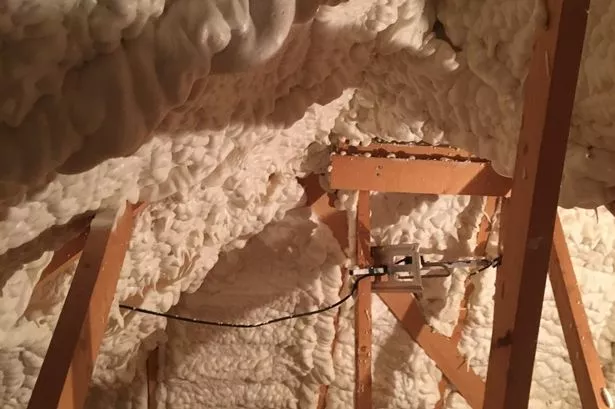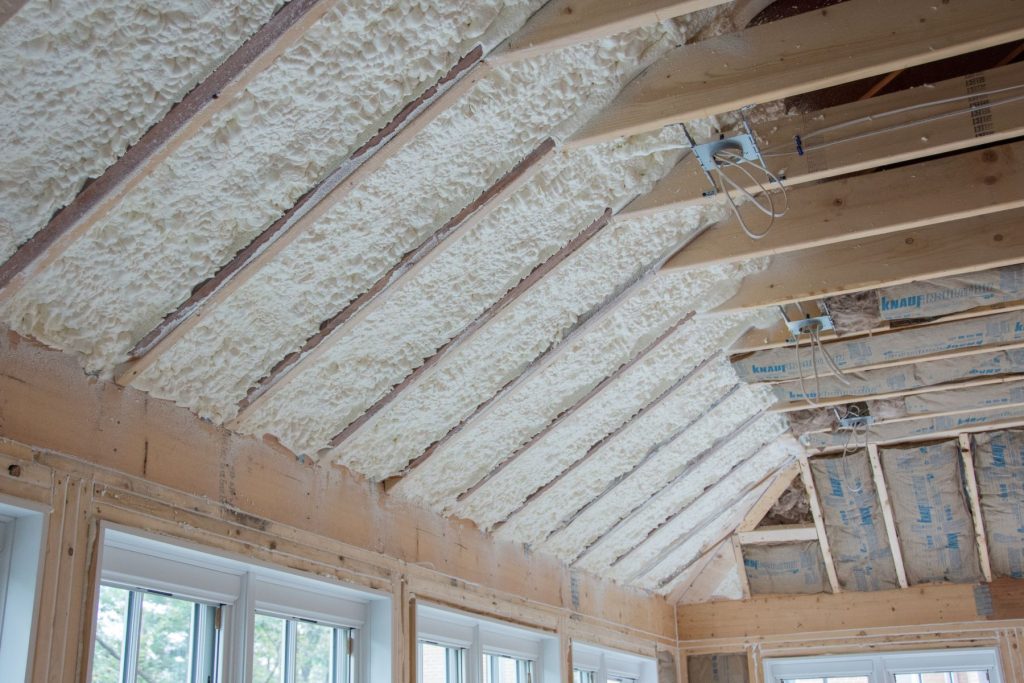Most Effective Types of Home Insulation for Reducing Energy Bills
To slash your energy bills, consider the most effective home insulation options. Fiberglass is affordable and easy to install. Spray foam offers superior sealing and energy efficiency, with open-cell or closed-cell choices. Cellulose insulation, made from recycled paper, is eco-friendly and highly effective. Durable rigid foam boards provide excellent insulating properties and moisture resistance. Reflective insulation, using aluminum foil, reflects heat and maintains indoor temperatures. Each type has unique benefits, and understanding them all will help you make the best choice. Stick around to uncover more details about these options for your home.
Fiberglass Insulation
Fiberglass insulation is one of the most popular choices for homeowners looking to reduce their energy bills. It’s affordable, effective, and relatively easy to install. You can choose between batts, rolls, or loose-fill forms, depending on your needs. For those residing in Scotland’s largest city, professional insulation installers Glasgow can ensure the job is done correctly and efficiently.
The installation process, while important, does require some preparation. Make sure you wear protective clothing, gloves, and a mask to avoid contact with the tiny glass fibers, which can be irritating to your skin and lungs.
Before starting the installation, measure the area you need to insulate to make certain you buy the right amount. If you’re installing batts or rolls, cut them to fit snugly between studs, joists, or rafters. For loose-fill, use a blower to evenly distribute the material in attics or other hard-to-reach spaces.
Proper installation is vital for maximizing energy efficiency and preventing gaps that could lead to heat loss.
Health considerations are essential when working with fiberglass insulation. Always handle it carefully to minimize exposure to the glass fibers. It’s advisable to ventilate the area and clean up thoroughly after the installation.
Spray Foam Insulation
For homeowners seeking an alternative to fiberglass, spray foam insulation offers superior sealing and energy efficiency. When you opt for spray foam, you’re choosing an insulation method that expands upon application, filling gaps and creating an airtight seal. This effectively prevents air leakage, which can greatly reduce your energy bills.
The process begins with a spray application, where the foam is applied as a liquid and quickly expands to fill cavities in walls, ceilings, and floors.
There are two types of spray foam insulation: open-cell and closed-cell. Open-cell foam has a lower foam density, making it more flexible and perfect for interior use. Closed-cell foam, on the other hand, has a higher foam density, providing additional structural support and superior moisture resistance.
Cellulose Insulation
When looking for an eco-friendly and effective insulation option, cellulose insulation stands out due to its use of recycled materials and excellent thermal performance. Made primarily from recycled paper products, cellulose insulation offers a sustainable way to improve your home’s energy efficiency. By choosing this type of insulation, you’re not only reducing your energy bills but also making a positive environmental impact.
The installation process is straightforward and can be done either by a professional or as a DIY project. The cellulose material is blown into wall cavities, attic floors, or other spaces, filling gaps and creating a dense, insulating barrier. This method guarantees that even hard-to-reach areas are well-insulated.
Here are some reasons why you should consider cellulose insulation:
- Eco-Friendly: You’ll love knowing that you’re using a product made from up to 85% recycled paper, reducing landfill waste.
- Fire Resistance: Feel safer with the added fire-retardant chemicals that give cellulose insulation high fire resistance.
- Sound Dampening: Enjoy a quieter home as cellulose insulation effectively reduces noise transmission.
- Cost-Effective: Save money not only on your energy bills but also on the installation process, as it’s generally less expensive than other options.
Choosing cellulose insulation means making a smart, environmentally responsible decision that benefits both your wallet and the planet.
Rigid Foam Boards
Rigid foam boards provide a durable and highly efficient insulation solution for reducing energy bills in your home. These boards are known for their excellent insulating properties and versatility. You can use them in various parts of your house, including walls, roofs, and foundations. Their rigid structure makes them easy to cut and fit into tight spaces, ensuring a snug installation.

When it comes to installation methods, you’ll find that rigid foam boards are relatively straightforward to work with. You can attach them directly to the studs or sheathing of your walls using adhesives or mechanical fasteners. Once in place, you can seal the seams with tape or spray foam to create a continuous barrier against heat loss.
One of the standout features of rigid foam boards is their moisture resistance. Unlike other insulation materials, these boards don’t absorb water, which makes them ideal for areas prone to dampness or high humidity. This moisture resistance helps prevent mold growth and maintains the insulation’s effectiveness over time.
Reflective Insulation
Reflective insulation uses a shiny surface, usually aluminum foil, to reflect heat away from your home, keeping it cooler in the summer and warmer in the winter. This type of insulation is particularly effective in reducing energy bills because it works as a radiant barrier, reflecting radiant heat rather than absorbing it. By installing reflective insulation, you can achieve notable energy savings and maintain a more comfortable indoor environment.
You’ll love how reflective insulation improves your home’s energy efficiency. Here are four reasons why you should consider it:
- Cost Savings: Reflective insulation can significantly lower your energy bills by reducing the need for air conditioning and heating.
- Easy Installation: You can install reflective insulation yourself, making it a DIY-friendly option that saves on labor costs.
- Improved Comfort: By reflecting heat, this insulation helps maintain a consistent indoor temperature, enhancing your comfort year-round.
- Environmental Impact: Using reflective insulation reduces your energy consumption, contributing to a greener and more sustainable environment.
Consider reflective insulation if you want a practical, cost-effective solution for heat reflection and energy efficiency. With its radiant barrier properties, this insulation type is a smart choice for homeowners looking to save money and stay comfortable.

 One of the key features of open-cell foam is its flexibility. Because it’s softer and more pliable, it can easily expand and fill irregular spaces within your walls. This ensures a snug fit, enhancing the overall insulation performance. Plus, its lower density makes it a cost-effective option for homeowners looking to improve their wall insulation without breaking the bank.
One of the key features of open-cell foam is its flexibility. Because it’s softer and more pliable, it can easily expand and fill irregular spaces within your walls. This ensures a snug fit, enhancing the overall insulation performance. Plus, its lower density makes it a cost-effective option for homeowners looking to improve their wall insulation without breaking the bank.

